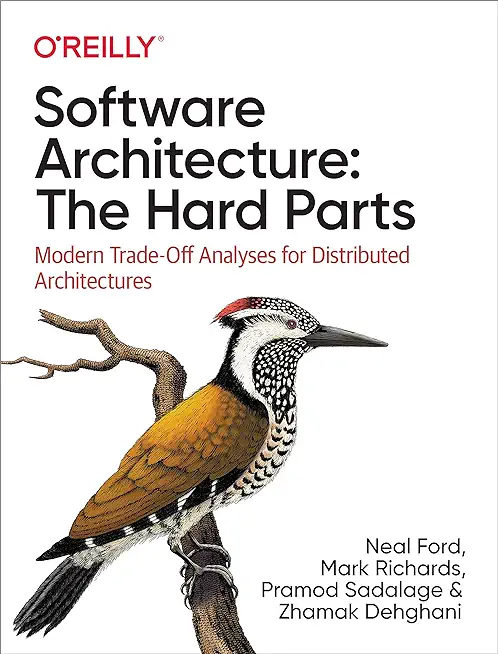Introduction to VMware vSphere
Server Resource Utilization
Server Consolidation
OS, Apps Tied to PC Server
Datacenter Issues
OS, Application Imaging
Back Up & Recovery
Server Refresh
Hardware Maintenance
High Windows OS Costs
Disaster Recovery
Test, Development & QA
IT Technical Career Benefits
vSphere Components
VMware ESX
VMware ESX Editions
Small Business Bundles
VMware vCenter
Single Host Deployment
Multiple ESX, Shared Storage
Full vSphere
Cloud Computing
Storage Cloud
Server Cloud
Network Cloud
VMware ESX and ESXi
ESX Block Diagram
Simple ESX Server Deployment
Scalable ESX Deployment
ESX Block Diagram
Scalable ESX Deployment
ESX Server Hardware
ESXi vs. ESX
ESXi
ESXi Set Password
Management IP Properties
IP Configuration
Management Agents
ESX Install Steps
Install vSphere Client
vSphere Client
Network Troubleshooting
Sizing ESX CPU, Memory
Sizing ESX Storage, NICs
System Health Status
Physical CPU Properties
Physical Memory Properties
Network Properties
Introduction to Virtual Networking
vNetwork Switches
Standard vSwitches
Distributed vSwitches
Physical Networking
Virtual Networking
ESX Networking
Isolated Virtual Networking
Outbound Virtual Networking
Outbound Teamed Networking
vSwitch Properties
Multi-homed Networking
High Performance Networking
vSwitch Connection Types
Port Groups
Network View
vSwitch Properties
Add Network Wizard
ESX Physical NICs
vmnic# to Physical NIC Roster
vSwitch Rules
Network Attached Storage (NAS) / Network File System (NFS)
Basic ESX Deployment
Network Attached Storage
NAS Options
Network File System
NAS/NFS Uses
NAS Components
Defining NFS Shares on Linux
NFS VMkernel Port
Define an NFS Share
NFS Share in Storage Roster
Disconnect an NFS Share
NAS/NFS Trade-offs
Troubleshooting NFS
Virtual Hardware and Virtual Machines
Virtual Machines
Virtual Hardware
Powered Off VMs
Datastore Browser
VM File Copy
New Virtual Machine Wizard
Base Virtual Machine HW
VM Wizard – CPUs
VM Wizard – Memory
VM Wizard – Disk
Virtual Disk Snapshots
Snapshots Manager
Complete the Virtual Machine
Remote Console
Virtual Machine BIOS
Install Guest OS
VM Running with Stock Drivers
VMware Tools
VMware Tools – Time Sync
VMware Tools – Connections
VMware Tools – Scripts
Supported Guest OS
Central Management with vCenter
vCenter
Licensed Add On Features
vCenter Diagram
vCenter Deployment
vCenter HW Requirements
Supported Databases
MS SQL Databases
MS SQL Express
Windows Services
Remote Management
vSphere is a Management Proxy
Don’t Bypass vCenter
Database Size Estimates
vCenter Install Sequence
vCenter Modules
Recovering vCenter
To Restart vCenter
vCenter Inventory Views
vCenter has 4 Categories
Inventory Views
Home View
Navigation Options – View
Location Bar
Organizing Inventory
Folders Organize Datacenters
Folders in Datacenters
Folders can Organize Hosts
VMs Run on Clusters
Inventory Views
Primary Inventory Views
Network, Datastore Views
Enhanced Features
vCenter Sessions
Resource Maps
Schedule Tasks
View Past Events
View System Logs
Licensing
vCenter Server Licensing
vCenter Server Status
vSphere Client Settings
Web Access
Logging In
Reviewing a VM
Web Access Remote Console
Virtual Machine Shortcut
vCenter Pricing
Rapid Deployment with VM Templates, Clones
Need to Cut Deployment Time
Template Theory
Template Benefits
Templates
Disk Formats
Select Template Disk Format
Creating a New Template
Template Properties
Template Maintenance
Templates in Hosts and Clusters
Deploy VM from Template
Clone a VM
Clone a Template
Windows VM Customization
Linux, Solaris OS Customization
Pre-Built Virtual Machines
Virtual Appliance Pros
Virtual Appliance Cons
Import Virtual Appliances
Export Virtual Appliances
Editing Virtual Hardware
Adding Virtual Hardware
Virtual Machine Options
Virtual Machine Resources
All VMs Support Simple Changes
Hot Add Virtual Disk
Raw Disk Map (RDM)
After Hot Add, Rescan Disks
Hot Grow Disks
vSphere Security & Permission Model
Managing Access to vSphere
Permissions – Privileges
Permissions – Roles
Permissions – Users
Assigned Permissions
Determining Permissions
Privilege Hierarchy
Inventory Object Permissions
Role Assignments
Work with Roles
Edit a Role
vCenter Users, Groups
Checking Permissions
View vCenter Base Permissions
ESX Users, Groups
View ESX Default Permissions
Permission Best Practices
Advanced Virtual Networking
Distributed vSwitches
dvSwitch Port Groups, Uplinks
Building a New dvSwitch
Review/Change dvSwitch
dvSwitch Port Assignments
VMs to dvSwitch Port Groups
Service Console, VMkernel
dvSwitch Uplink NICs
dvSwitch Properties
dvSwitch Advanced Properties
Advanced vSwitch Policies
Port Group Security
Traffic Shaping
Traffic Shaping Settings
NIC Team Settings
Load Balancing Policies
Originating Port Forwarding
Forward Based on MAC Hash
Forward Based on IP Hash
IP Hash Forwarding
Network Failure
Resilient Network Configuration
Notify Switches
Active and Standby NICs
Standard vSwitch VLANs
Create Private VLANs
Fibre and iSCSI SAN Shared Storage
Fibre Storage Area Networks
Fibre San Block Diagram
World Wide Names
Runtime Hardware Paths
Hardware Paths
Fibre HBAs
Storage Volumes
Storage Device Properties
Fibre SAN Review
iSCSI
iSCSI Capabilities
iSCSI Motivation
iSCSI Block Diagram
iSCSI Redundancy Options
iSCSI Qualified Names
LUN Discovery Options
iSCSI Hardware Initiators
iSCSI Software Initiators
iSCSI Ports
SC iSCSI Firewall Update
Enable iSCSI SW Adapter
Change iSCSI SW Adapter IQN
Enter IP Address of SAN SPs
Challenge Authentication Protocol
CHAP Authentication Process
Enter Your iSCSI Credentials
iSCSI SP Correctly Added
Scan iSCSI SAN
New iSCSI LUNs
iSCSI Trade-offs
Troubleshooting iSCSI
Storage Reports
Boot from SAN
Fibre Boot from SAN
iSCSI Boot from SAN
Set Boot Controller Order
VMware File System
Shared Storage
VMware File System
VMFS Features
VMFS Auto Discovery
Building a VMFS
Select Disk/LUN
VMFS Settings
New VMFS
VMFS Details
VMFS Capacity Management
LUN Span
To Add an Extent
Spanned LUNs
Grow Volume, VMFS
Grow Volume then Grow VMFS
VMFS Consumes Free Space
Multipathing
Fibre SAN Multipathing
iSCSI SAN Multipathing
Manage Hardware Paths
Path Selection Policy
Pluggable Storage Architecture
Resource Management and Resource Pools
Resource Administration
Resource Delegation
CPU Resource Tunables
Physical to Virtual CPU Service
Dynamic Memory Balancing
VM Memory Tunables
Memory Resource Tunables
Shares
Resource Pools
Resource Pool Settings
Expandable Reservations
Why Use Resource Pools
Auto-Update Resource Pools
CPU Resource Allocations
Memory Resource Allocations
Virtual Hardware Resources
Resource Pool Summary Tab
VMware Guiding Consolidation
Guided Consolidation
Select Domains/Workgroups
Selecting Hosts in a Domain
Monitored Host Roster
Migrating Monitored Hosts
Target Host Recommendations
Converting the Physical Host
Enterprise Planning/Migration
Virtual Machine Cold, Hot and Storage Migration
Cold Migration
Why Cold Migrate
VMotion Migration
VMotion Benefits
VMotion Requirements
VMotion Scenario
Memory Pre-copy
Progress is Monitored
VM is Descheduled
VM Context is Transferred
Switch Over
VM Scheduled to Run
Housekeeping
VMotion Experience
Failed Validation
Validation Warnings
Host Compatibility
CPU Compatiblity
CPU Identification Utility
Storage VMotion
Storage VMotion Scenarios
Distributed Resource Scheduler
DRS Goals
DRS Clusters
DRS Functions
DRS Automation Level
Migration Threshold
Distributed Power Management
EVC and AMD CPUs
EVC for Intel CPUs
EVC Benefits
DRS EVC Requirements
VM Swapfile Location
Affinity, Anti-Affinity Rules
Per-VM Overrides
DRS Cluster Summary Tab
CPU/RAM Host Distributions
Resource Allocation Tab
DRS Tab
Resource Management
Adopting DRS
DRS Best Practices
VMware High Availability Clusters
HA VM Requirements
Enabling HA Fail Over
VMware HA Host Failures
Host Failures Allowed
HA Reserve Resources
HA Cluster Heartbeat
HA Restart Priority
HA Isolation Response
VM Monitoring
How Isolation Response Works
Service Console NIC Failure
VM Powered off When Isolated
Move, Power on VM
Adding a Host to a Cluster
Maintenance Mode
Resolving HA Problems
HA and DRS
Isolation Response Issues
Best Practices
VMware Fault Tolerance
ESX & VM Backup Strategies
VM Backup Challenge
Traditional Network Backup
Reduce Backup Stress
Service Console Backup
VMware Consolidated Backup
VCB Layout with Backup Proxy
VCB – Initiate Backup
VCB VMDK Image Backup
VCB + 3rd Party Backup App
Completing a VCB VM Backup
VCB Command Line Tools
Catalog File
Post Restore Housekeeping
VCB File and Directory Restore
VMware Converter Restore
VMware vCenter Converter
Clone & Update Disks
Install and Enable Converter
Manage Plugins
Converter Steps
VM Reconfiguration
Guest OS Customization
Converter Housekeeping
New VM Housekeeping
Copying Disk Volumes
Converter Caveats
USB Protected Apps
Trouble Spots
Performance Analysis
Describe Problems
ESX CPU Usage Strategy
Active VM CPU Scheduling
Physical to Virtual CPU
Sequential vs. Concurrent Tasks
Idle VM CPU Scheduling
CPU Over Commit
Physical Memory
Virtual Machine Memory
VM Memory Over Commit
Physical RAM to VM Allocation
Transparent Page Sharing
Memory Ballooning
VMkernel Swap
Ballooning vs. VMkernel Swap
Memory Management Review
Disk I/O Bandwidth Contention
Basic Performance Charts
Advanced Performance Charts
Performance Chart Options
Performance Problems
Tracking VM CPU Ready Time
CPU Ready VM Experience
To Resolve CPU Over Commit
Monitoring Memory Stress
Memory Ballooning – Overview
Page Faults in Task Manager
VM CPU, Memory Consumption
Best Practices
vSphere Alarms
vCenter Alarms
Adding an Alarm
Alarm Settings
ESX Host Alarms
Virtual Machine Alarms
Alarm Reporting
Set Alarm Actions
Default Alarms
Set E-Mail Properties
Set SNMP Properties
Change Custom Alarms
Acknowledge Alarms
Alarm Best Practices
vSphere Final Thoughts
What to Virtualize
CPU Considerations
Memory Considerations
Storage Considerations
Network Considerations
Server Capacity Management
VM High Availability






